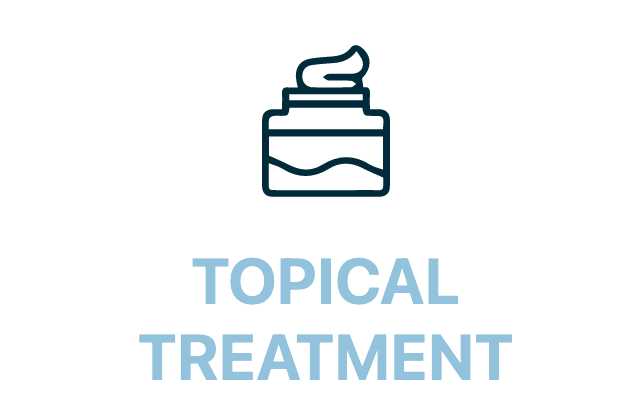Athlete’s foot is caused by a fungus called tinea pedis, that grows on or in the top layer of skin. This fungus grows best in warm, wet places, such as the area between the toes.
Athlete’s foot can spread very easily. You can get it by touching the toes or feet of a person who has it or by walking barefoot on contaminated surfaces near swimming pools locker rooms, or public showers.
The problem of transmission becomes even more problematic as it will grow in your shoes, especially if your shoes are so tight that limits airflow. So even though you may treat the infection on your feet, you reinfect yourself by wearing the same shoes and the cycle continues. This is one of the reasons in addition to treating the athlete’s foot tinea pedis on your feet, it is also important that you spray an antifungal in your shoes. Anyone that has ever gone bowling may recall how when you return your shoes, the person at the counter will spray something into the shoes before returning them back on the rack. That spray is to kill any contagious fungal infections and bacterial infections.

Get a prescription treatment for Athlete’s Foot now
Signs and Symptoms of Athlete’s Foot (tinea pedis)
Some of the most common symptoms of athlete’s foot symptoms include:
Itching and redness between the toes or bottom of feet.
Peeling skin or dry flaky skin
The affected area become red and can ooze.
A burning or stinging sensation.
The surrounding areas on the feet or hands start to swell.
Blisters begin to develop.
Foul odors start to emit from the feet or hands.
Causes of Athlete’s Foot

Actual skin-to-skin contact with someone’s infected area.
Using items that were used by the affected person like nail clippers, used towels, bath mats, shoes, used socks or other clothing, or unwashed bedsheets.
A person with Athlete’s Foot can also spread their infection to others on floors if they walk around with the affected area uncovered. This is why Athlete’s Foot is a problem that arises often in unhygienic communal areas such as public bathrooms, public pools, spas, locker rooms, or anywhere with high, barefoot traffic.
Get a prescription treatment for Athlete’s Foot now
Risk factors for Athlete’s Foot
Those at higher risk for fungal infection are diabetics, immunocompromised people and those frequently exposed to areas where fungi like to live – such as public showers or baths. Tinea pedis fungus thrives in warm damp areas. Tight fitting shoes and can even increases your risk of getting other infections such as toenail fungus which enters through the nail bed.
Commonly with severe cases of a fungal skin infection, cracks and fissures can occur in the skin exposing the tissue beneath which can complicate things with bleeding, and lead to other infections. Diabetics, people who are immunocompromised or other risk factors that have Athletes Foot or other fungal skin infection needs to be very careful and should seek treatment from a doctor.

Treatment of Athlete’s Foot
Treatment options vary depending the severity of your athletes foot. From home remedies, to over the counter medications as well as prescription antifungal medications. When treating athlete’s foot, you should always start with clean dry feet and you should treat your shoes with an antifungal powder.
Over the counter Athlete’s Foot medications include:
terbinafine (Lamisil AT)
clotrimazole (Lotrimin AF).
Prescription Athlete’s Foot medications include:
Clotrimazole (Lotrisone)
Econazole (Ecoza, Spectazole)
Ciclopirox (Loprox)
Home remedies for Athlete’s Foot include:
Soaking the affected area in a mixture of apple cider vinegar and salt water can clear up the blisters while also killing bacteria.
Rubbing tea tree oil solution onto the skin can also help as tea tree oil soothes the skin and can alleviate the itching, burning, and redness.
Hydrogen peroxide or potassium hydroxide disinfects the skin and allows the area to create a protective barrier against new infections.
A garlic clove foot soak with warm water can be beneficial. Garlic has antifungal properties and a compound found in garlic called Ajoene has been known to cure Athlete’s Foot.
Get a prescription treatment for Athlete’s Foot now

Can athlete’s foot go away by itself?
Many people believe the athlete foot can disappear without any help or treatment. It may seem to get better but unless treated athlete’s foot usually doesn’t recover completely and will reoccur until it is treated, which can lead to other complications (see complications below)
What can be mistaken for athlete’s foot?
Certain conditions such as skin rashes or acne are very similar to athletes’ feet. Sometimes the skin barrier can become damaged and other infections are possible.
Athlete’s foot complications
The biggest complication associated with athlete’s foot relates to poor treatment or lack of treatment. Left on its own, fungi can spread to other parts of the body, including the hands, legs, toenails and fingernails, as well as other people.
Fungi does not typically spread too deeply within the body (i.e. it is not likely to affect the body’s internal organs or bloodstream). It does, however thrive in skin, nails and hair (keratin). Spreading can result in the following:
Onychomycosis or tinea unquium (infection of the nails)
Tinea cruris or ‘jock itch’ (infection of the groin area – genitals, buttocks and inner thighs)
Tinea corporis (infection of the skin in other areas of the body)
Secondary bacterial infections (as a result of bacteria and yeast causing inflammation, fever, pus drainage, swelling and pain)

